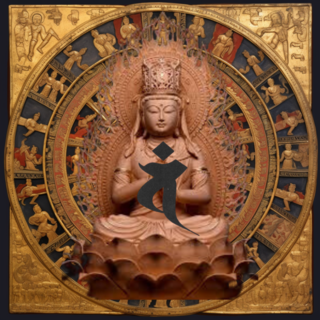舎利子よ。
その教えをここに説くならば、形ありとて形にとらわるべからず。縁あってかりに形を生じたものなれば、縁によっては、また、形なき空なるものに変らん。また、形なしとて無しと思うな、縁によっては、形を生じ相をあらわす。
たとえば、かの水を見よ。熱するという縁をあたうれば熱湯となり、蒸気となって空にとけこむ。
水の自性に変りなく、ただ縁によってかく変化す。世のことすべてみなこの如し、形あるも無きも本は一体にして、すべて因縁次第なり。
人の心の作用の、受も想も行も、識のはたらき、すべてこの理にほかならず。
人は敷き、悲しみ、あるいは喜ぶ、されど、人の性の内に、敷き、悲しみ、喜びの、
一定の性のあるにはあらず。因縁因果の理法により、因に応じ、縁が動いて、かりに相をあらわすのみ。これを空の理と云うぞ。
Contemplation of the Flow of Dependent Origination and Transience of Water
Shariputra.
If I were to preach that teaching here, one should not be caught up in the idea that something has form. If it were to take form because of some connection, then depending on that connection, it could change into something empty and formless. Also, one should not think that something has no form, because depending on the connection, it can take form and show its appearance.
For example, look at water. When it is heated, it becomes boiling water, and then it turns into steam and melts into emptiness.
The nature of water does not change, and it changes in this way only depending on the connection. All things in the world are like this. Whether they have form or not, they are originally one and all depend on the cause and condition.
The actions of the human mind, including feeling, thinking, action, and the workings of consciousness, are all based on this principle.
People can be happy, grieve, or happy, but there is no fixed nature of being happy, grieving, or happy within human nature. According to the principle of causality, the condition moves in response to the cause, and the appearance is merely manifested provisionally. This is called the principle of emptiness.
【このカテゴリーの最新記事】
-
no image
-
no image






